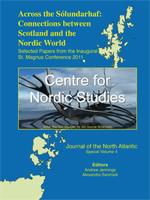In 1152/3, Nidaros Cathedral in Trondheim, Norway, became the center of a vast archiepiscopal authority reaching across the North Sea. The cathedral then became the site of much architectural activity, beginning with the addition of Romanesque transepts during the 1150s–1160s to the pre-existing church. This paper considers the patronal efforts of Nidaros' first and second archbishops, Jón Bírgisson (1152/3–1160) and Øystein Erlendsson (1161–1188), in relation to this construction period. It examines the cathedral's influence on Norwegian architecture based on the relationship between the Nidaros stone workshop and contemporary Norwegian churches, including the geographically close Stiklestad and Old Sakshaug. Subsequently, it identifies related structures across the North Sea in England, such as Southwell Minster, York Minster, and Lincoln Cathedral, thus expanding on the concept of a “North Sea School of Architecture”, as briefly discussed by Eric Fernie on St. Magnus Church in Egilsay and Malcolm Thurlby on Kirkwall Cathedral. This study begins to establish a group of buildings that can comprise this North Sea school, emphasizing an argument for the paramount role the sea played as a conduit of stylistic transmission.1
BioOne.org will be down briefly for maintenance on 17 December 2024 between 18:00-22:00 Pacific Time US. We apologize for any inconvenience.
How to translate text using browser tools
1 October 2013
A “North Sea School of Architecture?”: Nidaros Cathedral's Romanesque Transepts and North Sea Medieval Architecture
Candice Bogdanski
ACCESS THE FULL ARTICLE

Journal of the North Atlantic
Vol. 2013 • No. sp4
2012-2013
Vol. 2013 • No. sp4
2012-2013




